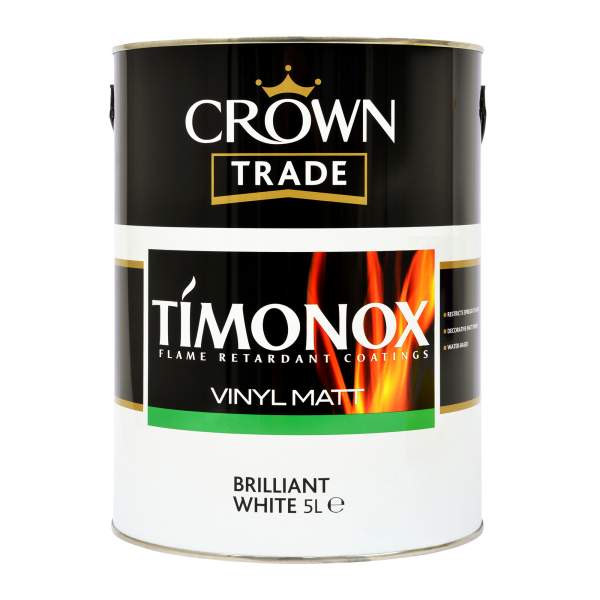The Dangers of Skipping Fire Retardant Paint: What Happens?
Ignorance about fire safety can lead to catastrophic consequences. Choosing not to use fire retardant paint may seem like a small oversight, but it can have grave implications for your property and safety.
The Unexpected Threat of Unprotected Surfaces
When surfaces are left untreated, they become vulnerable to flames. Wood, drywall, and other common materials can easily ignite. Without fire retardant paint, the risk escalates dramatically.Fire's Rapid Spread: A Matter of Seconds
A fire can grow from a tiny flame to a raging inferno in mere seconds. The National Fire Protection Association reports that in a home fire, the time from ignition to flashover can be as short as 3 minutes. This leaves little time for evacuation or response.The Critical Role of Fire-Retardant Paint
Fire-retardant paint acts as a safeguard, slowing down the spread of fire. This gives occupants crucial extra time to escape and emergency responders a better chance to control the blaze.Understanding Fire Retardant Paint: More Than Just Colour
How Fire Retardant Paint Works: A Science-Based Approach
Fire retardant paint contains chemicals that slow the combustion process. When exposed to heat, it forms a thick char layer that insulates the underlying material. This helps delay ignition.Different Types of Fire Retardant Paint: Choosing the Right One for Your Needs
- Intumescent Paint: Expands when heated, creating a protective layer.
- Cementitious Coatings: Often used in commercial buildings for structural steel.
- Coatings for Wood: Specifically formulated to protect wooden surfaces.
Cost vs. Safety: An Investment in Peace of Mind
While fire retardant paint may add some upfront costs, investing in safety is always worth it. The potential costs of damage, loss of life, and legal issues far outweigh initial savings.The Devastating Consequences of Not Using Fire Retardant Paint
Property Damage: Beyond Repair
Without fire retardant paint, a fire can result in irreversible damage. Homes and businesses may be completely destroyed, leaving families and individuals without shelter or livelihood.Loss of Life: The Ultimate Price
The most heartbreaking consequence is the loss of life. Many fatalities occur due to smoke inhalation or being trapped. Fire-retardant paint can provide that extra moment for escape.Legal Ramifications: Liability and Responsibility
In the unfortunate event of a fire, failing to use fire retardant paint can lead to legal consequences. Victims may seek compensation for damages, resulting in a long and costly legal battle.Real-World Case Studies: Learning From Others' Mistakes
Case Study 1: Industrial Building Fire
In 2021, a factory blaze could have been prevented with fire retardant paint. The lack of protection resulted in millions in damages and job losses.Case Study 2: Residential Fire Incident
A family lost their home when a small kitchen fire spread rapidly. Investigators found that untreated surfaces contributed significantly to the flames' speed.Case Study 3: Analysis of Fire Spread in Unprotected Structures
Several studies have shown that unprotected structures are highly susceptible to rapid fire spread, leading to extensive damage and loss within minutes.Building Codes and Regulations: Mandatory Use in Specific Applications
Compliance and Safety Standards: Navigating the Legal Landscape
Many regions have laws requiring fire-retardant paint in commercial buildings and certain residential projects. Ignoring these regulations poses significant risks.Industry Best Practices: Recommendations and Guidelines
Consulting with fire safety experts can provide guidance on using fire retardant paint effectively. Regular training and safety drills are equally vital.Penalties for Non-Compliance: Avoiding Legal Action
Failure to comply with fire safety regulations may result in hefty fines and increased insurance premiums. More importantly, it threatens lives.Protecting Your Property and Loved Ones: Choosing Fire Safety
Selecting the Right Fire Retardant Paint
Consider your property's specific needs. Evaluate materials and the environment to select the most effective product.Proper Application Techniques for Maximum Effectiveness
Follow manufacturer recommendations for application. Ensure surfaces are clean and dry for the best adhesion.Regular Inspections and Maintenance for Long-Term Protection
Schedule regular inspections to check the integrity of fire retardant coatings. Performing maintenance helps ensure they remain effective.Conclusion: Prioritise Fire Safety with Fire Retardant Paint
Fires can have devastating impacts on life and property. Opting for fire-retardant paint could prove to be the defining choice for safety.Key Takeaways: Preventing Fire-Related Loss
- Use fire-retardant paint for critical protection.
- Understand the types of fire retardant options available.
- Stay informed about regulations and best practices.

